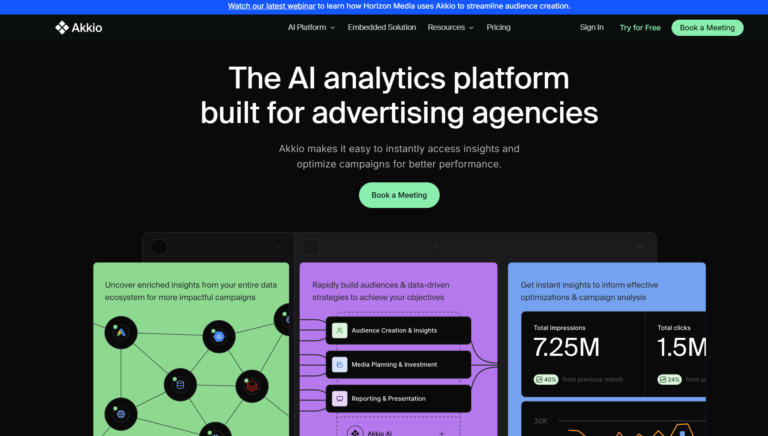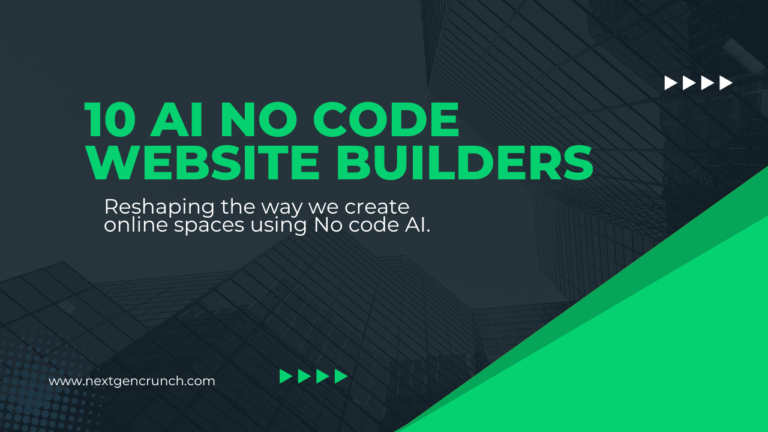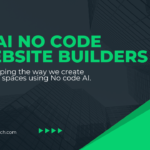
The Ultimate Guide to Low-Code and No-Code AI: Concepts, Benefits, and Getting Started
Imagine a world where technology adapts to people, not vice versa. That’s the promise of low-code and no-code AI—a revolutionary approach breaking down the intimidating walls of traditional software development. For years, artificial intelligence seemed like an exclusive club reserved for tech wizards and large corporations. Not anymore.
Today, we’re witnessing a profound democratization of technology. Small businesses, entrepreneurs, and professionals without deep coding backgrounds can now leverage powerful AI solutions. It’s like giving everyone a master key to the previously locked innovation room.
Our guide isn’t just about explaining a technological trend—it’s about empowering you to transform your ideas into intelligent solutions. We’ll demystify low-code/no-code AI, revealing how these platforms are reshaping industries by making advanced technology accessible, affordable, and user-friendly.
This isn’t about replacing technical expertise but amplifying human potential. By reducing complex coding barriers, we enable more people to solve problems, streamline processes, and unlock creativity. Whether you’re a startup founder, marketing professional, or curious innovator, this journey is about turning your vision into reality—without needing a computer science degree..
1. Introduction
In the dynamic landscape of modern business, survival hinges on one critical skill: adaptability. The digital revolution has transformed how organizations innovate, with artificial intelligence emerging as a powerful catalyst for change. Yet, traditional AI development has long been a fortress—guarded by complex coding requirements and prohibitive costs that shut out all but the most resourced enterprises.
Low-code/no-code AI platforms are now demolishing those barriers, offering a strategic pathway for businesses of all sizes to harness cutting-edge technology. These innovative solutions serve as a strategic equalizer, enabling professionals across diverse roles to transform innovative concepts into intelligent applications with unprecedented speed and accessibility.
Consider the possibilities: A startup founder can rapidly prototype a game-changing idea. A marketing team can develop sophisticated automation tools without deep technical expertise. An educator can introduce complex AI concepts through hands-on, practical implementation. These platforms are not just technological tools—they’re bridges connecting human creativity with technological potentials.
Source: Forbes highlights how democratized AI platforms are transforming industries by reducing the need for specialized coding skills (Forbes, 2023).
2. Understanding Low-Code/No-Code AI
What is Low-Code and No-Code AI?
Low-code/no-code AI refers to platforms and tools that allow users to develop AI models and applications with little to no programming required. These platforms provide intuitive interfaces, pre-built modules, and drag-and-drop functionalities to simplify the process of building AI solutions.
- Low-Code Platforms:
These require some coding knowledge but drastically reduce development time by automating routine tasks. They are ideal for developers who want to streamline their workflow. - No-Code Platforms:
Completely eliminate the need for coding, empowering non-technical users to create AI-driven applications through graphical interfaces.
Historical Context and Evolution
Traditionally, AI development has been the domain of data scientists and programmers. However, with the rise of democratized technologies, platforms such as Google’s AutoML and Microsoft’s Power Platform have begun to reshape the industry. This shift has been influenced by the increasing demand for rapid prototyping and the need to bridge the skills gap in the workforce.
How These Platforms Work
- Drag-and-Drop Interfaces:
Users can design workflows visually, connecting pre-built blocks that represent data processing, model training, and deployment. - Pre-Trained Models and Templates:
Many platforms offer libraries of pre-trained models that can be customized to meet specific needs without starting from scratch. - Integration with Data Sources:
Seamless connectivity with databases, APIs, and cloud services enables users to input and process data quickly.
3. Benefits of Low-Code and No-Code AI
Adopting low-code/no-code AI platforms offers several advantages:
Accelerated Time-to-Market
- Faster Prototyping:
Businesses can quickly create and test AI models, reducing the time between ideation and deployment. - Iterative Development:
The simplified development process allows for rapid iterations, ensuring that applications are continuously improved.
Cost Efficiency
- Reduced Development Costs:
By minimizing the need for extensive coding, organizations can save on hiring specialized talent and reduce development cycles. - Lower Maintenance Costs:
Pre-built modules and standardized workflows can lead to fewer errors and easier maintenance.
Democratization of AI
- Accessibility:
Non-technical users can leverage powerful AI tools, fostering innovation across different departments within an organization. - Wider Adoption:
Lower barriers to entry mean that small businesses and startups can now compete with larger enterprises in the AI space.
Improved Agility and Flexibility
- Rapid Adaptation:
Companies can respond more quickly to market changes and customer needs. - Scalability:
Many platforms offer scalable solutions that grow with your business needs.
Data Point: According to Statista, the global low-code development platform market is expected to reach $65B market by 2027, signaling massive digital transformation opportunity and reflecting the growing adoption of these technologies (Statista, 2022).
4. Challenges and Considerations
While the benefits are compelling, there are some challenges to consider:
Limited Customization
- Pre-Built Constraints:
While templates and modules accelerate development, they can limit customization. Complex or highly specialized AI tasks may still require traditional coding approaches.
Integration Issues
- Compatibility:
Integrating low-code/no-code solutions with existing systems and legacy data can sometimes present challenges. - Data Privacy and Security:
Ensuring that the platform adheres to data protection regulations is essential, especially when handling sensitive information.
Scalability Concerns
- Performance Limitations:
Some no-code platforms may struggle with large-scale deployments, requiring businesses to eventually transition to more robust systems as they grow.
Expert Insight: In an interview with TechCrunch, industry experts emphasized that while low-code and no-code platforms are transformative, companies should evaluate them against long-term scalability needs (TechCrunch, 2023).
Pro’s and con’s of Low-Code and No-Code AI

5. Current Trends and Industry Insights
Democratization and Mainstream Adoption
- Expanding Use Cases:
From marketing automation to customer service chatbots, low-code/no-code AI is finding applications across diverse industries. - Increased Investment:
Venture capital investments in low-code platforms have surged, with startups receiving significant funding rounds to innovate further.
Integration with Cloud Technologies
- Hybrid Solutions:
Many platforms are integrating with cloud services like AWS, Google Cloud, and Microsoft Azure, enhancing their capabilities and reach. - AI-Enhanced Features:
Platforms are beginning to incorporate advanced AI features, such as natural language processing and computer vision, into their no-code offerings.
Case Study: A Startup Success Story
Consider a mid-sized retail company that integrated a no-code AI platform to automate its customer service operations. By leveraging pre-built modules, the company reduced its average response time by 40% and saw a 25% increase in customer satisfaction within six months. Such case studies highlight the transformative potential of these platforms across various sectors.
Source: An industry report by Gartner notes that companies using low-code solutions are experiencing up to 70% faster development cycles compared to traditional methods (Gartner, 2022).
6. Getting Started: A Step-by-Step Guide

If you’re ready to dive into low-code and no-code AI, follow these actionable steps to launch your first project.
Step 1: Define Your Project Objectives
- Identify the Problem:
What specific challenge or opportunity are you addressing with AI? Define clear, measurable objectives. - Set Your Goals:
Determine what success looks like—whether it’s improved efficiency, cost savings, or enhanced customer engagement.
Step 2: Choose the Right Platform
- Research and Compare:
Evaluate platforms based on usability, cost, integration capabilities, and support. Look for platforms with robust documentation and community forums. - Trial Runs:
Many providers offer free trials or demos. Use these to test the platform’s features and ensure it aligns with your project needs.
Step 3: Plan and Design Your Workflow
- Map Out Your Process:
Use flowcharts or diagramming tools to design your workflow. This includes data input, processing steps, and output mechanisms. - Select Pre-Built Modules:
Identify modules that can be leveraged directly. Customize these modules as needed to fit your project.
Step 4: Develop Your AI Model
- Data Preparation:
Gather and clean your data. Ensure that the data is relevant, high quality, and representative of your target problem. - Training and Testing:
Follow the platform’s guided processes to train your model. Use A/B testing to validate the model’s performance and make necessary adjustments.
Step 5: Deploy and Monitor
- Deployment:
Once your model meets your performance criteria, deploy it through the platform’s built-in tools. - Monitoring and Iteration:
Regularly monitor the model’s performance using analytics dashboards. Be prepared to iterate based on feedback and performance metrics.
7. Case Studies and Real-World Examples
Example 1: Retail Automation
A retail company used a no-code AI platform to automate customer service chatbots. The solution decreased response times by 40% and increased customer engagement, demonstrating the tangible benefits of rapid deployment and continuous improvement.
Example 2: Healthcare Diagnostics
A mid-sized healthcare provider implemented a low-code AI solution to analyze patient data, leading to faster and more accurate diagnostic processes. This not only improved patient outcomes but also reduced the workload on medical staff.
Example 3: Marketing Campaign Optimization
A digital marketing firm employed a no-code platform to analyze social media trends and optimize ad campaigns in real time. As a result, the firm saw a 30% improvement in conversion rates, illustrating the broad applicability of low-code AI across industries.
Source: Forbes published insights on how low-code and no-code AI is driving innovation in diverse sectors, including retail and healthcare (Forbes, 2023).
8. Conclusion and Next Steps
Low-code and no-code AI is revolutionizing the way businesses and individuals approach technology. By lowering the barriers to entry, these platforms are not only accelerating innovation but also making AI more accessible and cost-effective. Whether you’re just starting or looking to integrate AI into your existing processes, the opportunities are immense.
Key Takeaways
- Accessibility:
Low-code/no-code AI empowers non-technical users to build and deploy AI solutions, democratizing technology. - Efficiency:
The rapid development cycle and cost-effectiveness of these platforms make them ideal for businesses of all sizes. - Scalability:
While challenges exist, the benefits of agile development and continuous improvement far outweigh the potential drawbacks. - Actionable Steps:
By defining clear objectives, selecting the right platform, and following a structured workflow, you can successfully implement an AI solution.
Are you ready to transform your business with low-code/no-code AI? Start by identifying a small project that can deliver immediate value. What challenge will you tackle first with these innovative tools?








[…] Check out the Ultimate Guide to Low-Code and No-Code AI […]
[…] dive deeper into how low-code and no-code platforms are revolutionizing the industry, check out our ultimate guide to low-code and no-code AI concepts, benefits, and getting started. AI enhances this transition by introducing intelligent features that anticipate user needs, […]
[…] about which approach is best for your business? Here is The Ultimate Guide to Low-Code and No-Code AI: Concepts, Benefits, and Getting Started, which let you go through the general understanding of no code and low code […]